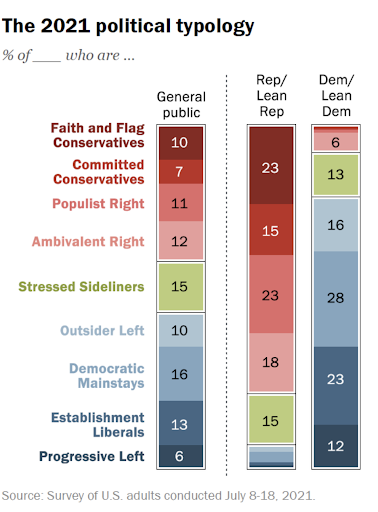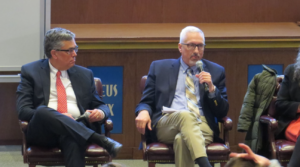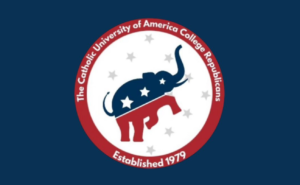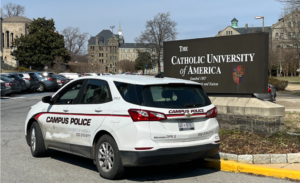There Are How Many Different Types of American Voters?

Image Courtesy of The Pew Research Center
By Jeremy Perillo
In the hyper-partisan political climate, Americans have become used to, politicians are often limited to either being a Democrat or Republican. However, in early November, the Pew Research Center released a report titled “Beyond Red vs. Blue: The Political Typology,” which breaks the American electorate into nine distinct groups.
Both parties are broken down into four subgroups. Democrats are a coalition of the Progressive Left, Establishment Liberals, Democratic Mainstays, and Outsider Left. The Republicans are seen as a coalition of Faith and Flag Conservatives, Committed Conservatives, Populist Right, and the Ambivalent Right. The largest electorate (15%) identified by Pew as the ninth group is the Stressed Sideliners. These voters do not fall under “Republican” or “Democrat” but instead, they hold views that span the political spectrum and often do not participate in elections.
The report goes on to further explain the meaning behind each subgroup. For Democrats, the Progressive Left and Establishment Liberals remain widely similar, but there do remain some differences. The Progressive Left is the only majority White non-Hispanic Democratic group which holds “very liberal views on virtually every issue and supports far-reaching changes to address racial injustice and expand the social safety net.” Establishment Liberals, while still very liberal, are less “persuaded” of the need for sweeping change.
The other two Democratic subgroups remain very different from each other. Democratic Mainstays, the largest subgroup and oldest on average, are fiercely loyal to the Democratic party and can hold more moderate stances on various issues. The Outsider Left, on the other hand, voted overwhelmingly for Joe Biden in 2020 and holds mostly liberal views but remains frustrated with the government, the Democratic Party, and its leaders.
Three of the four Republican subgroups are conservative in their beliefs, through and through. Faith and Flag Conservatives remain the most conservative and often hold the belief “that compromise in politics is just ‘selling out on what you believe in.’” Committed Conservatives are almost as equally conservative as the Faith and Flag Conservatives; however, they hold a “softer edge,” on issues like immigration, for example. The third subgroup is the Populist Right, which is critical of both immigrants and major U.S. corporations.
The Ambivalent Right stands separate from the three other subgroups. The group holds conservative views on the size of government, economics, and race and gender issues. However, this group, which is classified as the youngest and least conservative, is the only GOP-aligned group where majorities favor legal abortion and believe in legal marijuana use (medicinal and recreational). This group is also less enthused about former President Donald Trump. Even though a majority voted for him in the last presidential election, they would rather not see him as a major political figure in the party in the future.
The Stressed Sideliners represent 15% of the public and 10% of voters in 2020. Their mix of conservative and liberal views makes them unique without a clear partisan orientation. The only thing by which the group can confidently be identified is their minimal interest in politics.
With such a varying degree of ideologies amongst the political parties, it is fair to wonder if a clear common ground could ever be identified amongst the groups with the largest shares of self-identified independents: Stressed Sideliners, Outsider Left, and Ambivalent Right. Unfortunately for those seeking political “kum ba yah,” these groups share very little politically. The problem with these groups is that the issues on which they are more firm are contrary to the other groups’ more stringent positions. For example, Outsider Left is very liberal on most issues, especially on race and the social safety net.
For a group like the Ambivalent Right, some of those issues, or the extent to which those issues should be addressed, maintain complicated and passionate understandings that would prevent many avenues for reasonable common ground. That’s not to say that compromise or bipartisanship is dead, but this highlights why, despite infighting on both sides of the aisle, the large Republican and Democratic parties are still able to garner support from their rank-in-file members.






